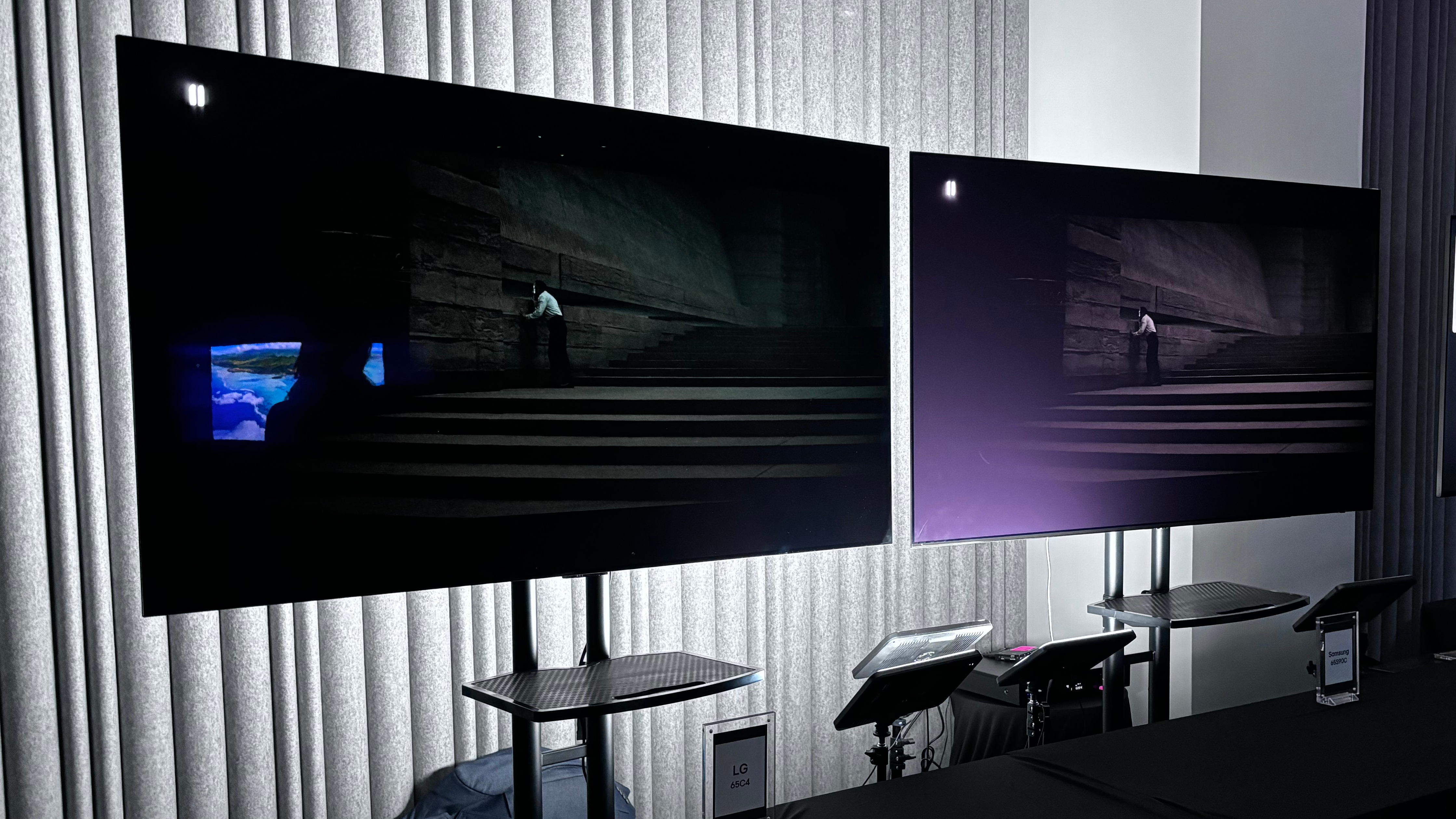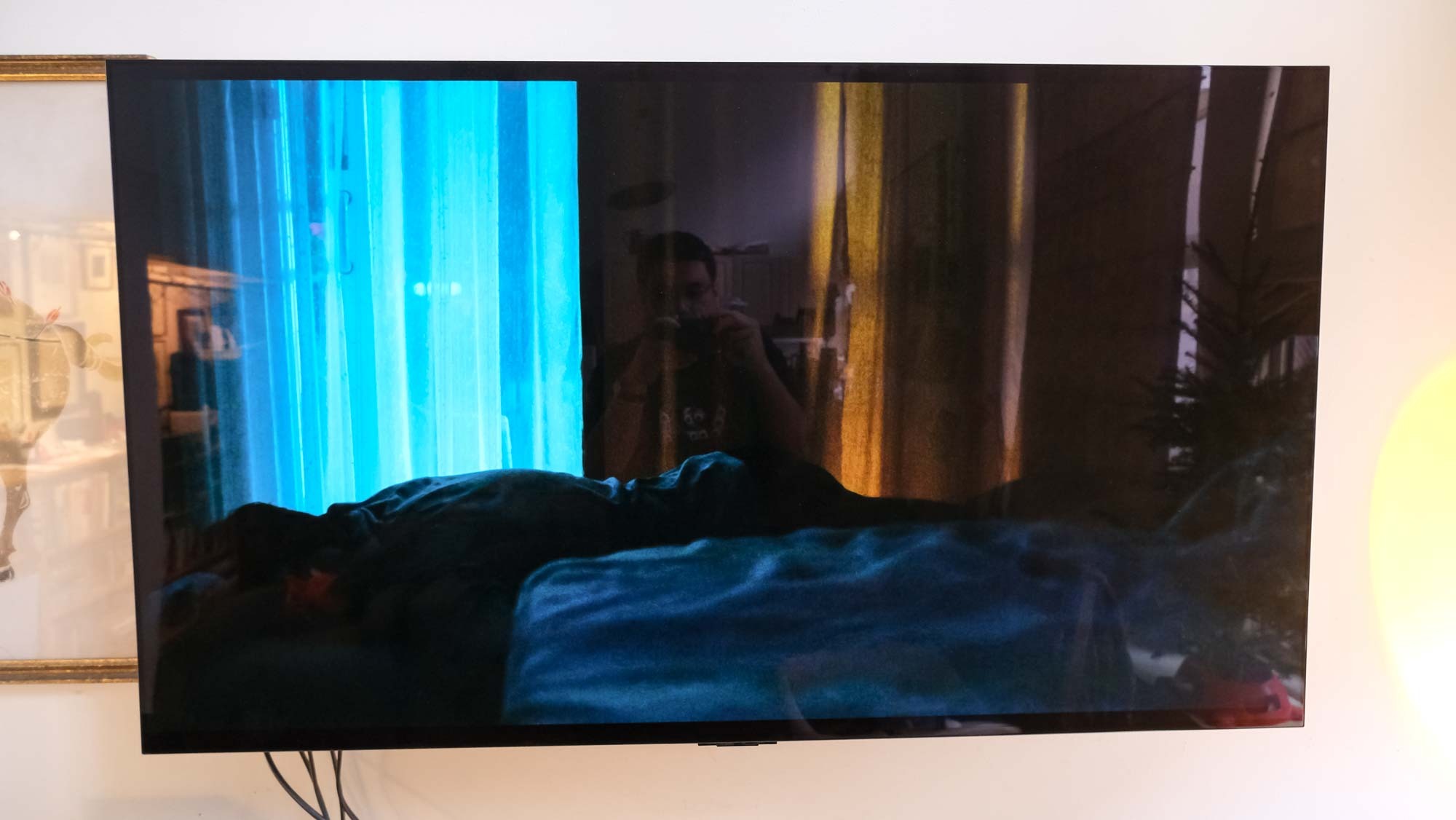

Glare is a type of ocular phenomena that reduces image quality on a display. Reflections can cause haze or glare, depending on whether the composition of the front panel your TV is matte or glossy. In short, not all reflections cause glare (loss of detail or eye pain), but all reflections are distracting when they interfere with a TV’s picture.
On the surface of it, glare is a pretty simple concept: Light from the outside or from an overhead light hits the screen and reduces the contrast on your TV to a point in which you can no longer make out any details. It’s a problem that screens have had since the beginning — and, if left untreated, can really ruin even the best TVs.
But how, exactly, do you go about fixing the problem of glare?
There are a few approaches depending on where you’re at in the TV buying process. If you want to preemptively prevent glare, you can place the TV away from windows and in a spot where overhead lights won’t be an issue. If you’ve already bought your TV but have yet to mount it, you can buy a tilting or panning mount that will change the angle that light hits your TV. Lastly, if your setup is set in stone, you can consider blinds or curtains.
It sounds like a lot of work to get a better picture, sure, but the results are well worth it.
What to do before you buy a TV to reduce glare
Ideally, you’re thinking about glare before you even buy a new TV as placement is the absolute biggest factor when it comes to glare.
Where you put your TV will depend on a lot of factors, not the least of which is room layout, but making sure there are no windows directly behind where you sit is a big first step to preventing glare.
Where you put your TV will depend on a lot of factors, not the least of which is room layout, but making sure there are no windows directly behind where you sit is a big first step to preventing glare. If you're putting the TV in a room with lots of windows, find the spot that has the least amount of light (like, say, a dark corner) and plan on putting your TV there.
Windows are going to be the largest contributors to glare, but you should also consider where lightbulbs and lamps are located as well. It's great to have a lamp behind or off to the side of a TV — this can actually increase the perceived contrast of a TV — but you don't want lights reflecting off the screen.
As long as you're putting the TV at eye level, overhead lighting shouldn't be an issue but if you plan on mounting the TV above a fireplace (don't do this if you can avoid it) plan on buying a tilting mount to go with the TV so you don't see the lights reflected on the screen.
What to do after you buy a TV to reduce glare

If you've already bought and hung up your TV, don't worry — all hope of glare-free TV viewing hasn't gone out the window. The first and most obvious solution is to hang curtains over the windows to block out ambient light. You might not need full-on blackout curtains that you'd find in a hotel, but those are certainly the best option if you're creating an in-home theater.
Another easy solution would be to raise the brightness on the TV, but you'll be risking losing out on contrast to do so. It's not ideal, but it's certainly one tool in the bag that you can use on a particularly bright day.
Another solution would be an aftermarket anti-glare filter. These stick onto the screen using adhesives and act as a light polarizer. However, doing this will reduce the brightness of the screen, as the polarizing material also reflects the light of the screen back into the TV.
Finally, the last option, which is going to require a lot of work — you can consider buying one of the best TV mounts that either tilts or pans to reduce the intensity of glare. This will require you to mount — or take your TV off the wall and re-mount it if you're already using a standard flat mount — but this is probably the second best thing you can do besides changing the location of your set to reduce glare.
If you're worried about glare being a problem, consider the new Samsung S95D OLED that was specifically designed to combat glare.







